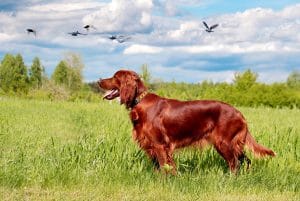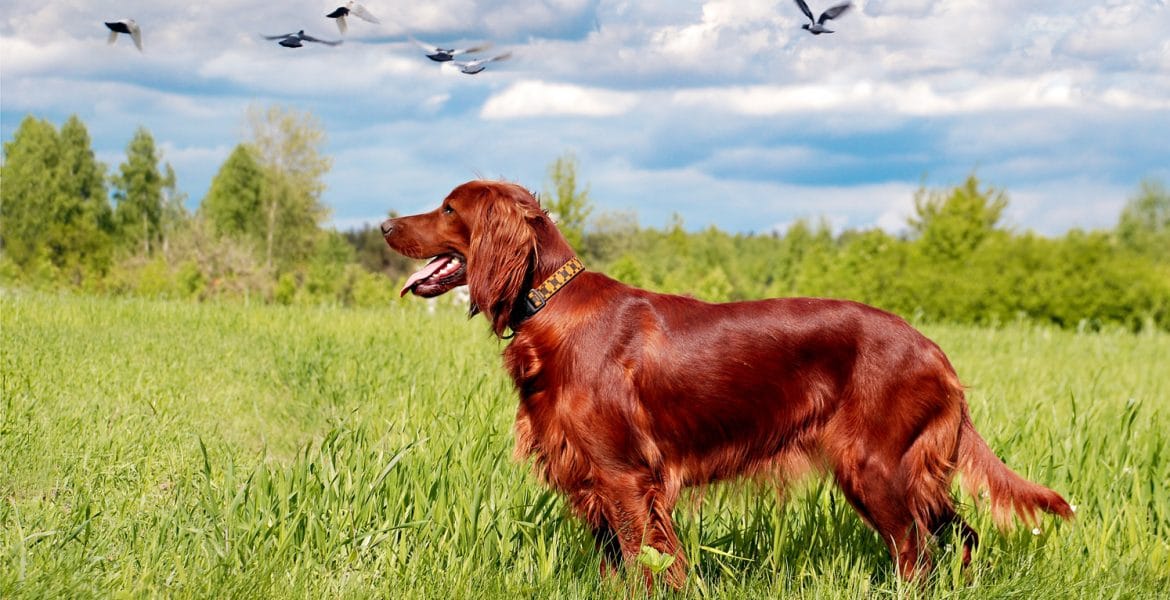The winner of Crufts 1999 – The Irish Setter
History of the Breed
Although we associate the Irish setter with its stunning red coat, ancestors of this breed were white with brown patches. It is believed the Irish setter came into existence through the mating of pointers, spaniels, and Gordon setters in Ireland. During the eighteenth century, hunters favored this breed of dog because it was the perfect hunting assistant. This dog knew a hunter’s hand signals, and it knew how and when to remain quiet so that the hunter could catch the animals he was hunting. Irish Setters became valuable dogs, and during the 1860s they were put on display in shows that took place in Ireland. Not long after that, Irish setters became popular winning show dogs. Because of their popularity, more and more people wanted to own an Irish setter, and more and more people wanted to breed them. Since artwork painted in the 16th century showed images of Irish Setters, it is believed the breed has been around since that time or earlier.

Physical Attributes
An Irish setter stands about 25 to 27 inches in height. It has a long snout, a black or brown nose, and brown eyes. The legs on this dog are an average length, and they appear to be strong looking. Its coat is luxuriant, and the color of the coat can be a moderate or deep reddish brown. A white area on the chest, throat, toes or forehead may also be evident. The hair on its body is moderately long, but on the back of its front legs, the hair is longer. Long wisps of hair extend from the ears, and the chest is covered with a long fringe. The tail has a rather long fringe that tapers at the end. Irish setters look elegant and give off a cute, innocent expression that is hard to resist.
 Family Life
Family Life
Family life with an Irish setter is usually harmonious. This dog breed is kind and patient in the company of children, and it loves visitors that stop by. If you have other dogs in the house, you do not have to worry about a fight because Irish setters get along well with other canines, and they get along with cats. Since the Irish setter is an active dog, it will be most happy with a family that can provide it with lots of exercise. Long walks suite this dog well, and a big yard it can run around and play in will make it very happy. This fun-loving dog never outgrows its playfulness. It is an intelligent dog that needs attention, and it knows how to obey orders. Expect to receive a lot of love and affection from an Irish setter because this breed of dog has much to give.


